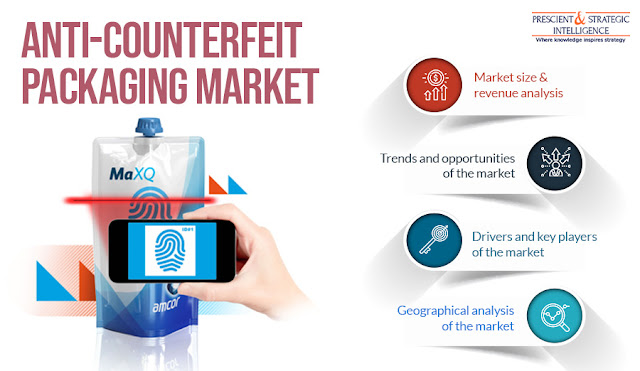
Why Is Anti-Counterfeit Packaging Essential for Pharmaceutical Sector?
In 2019, counterfeit goods accounted for 3.3% of the global retail sales value, as per the Organisation for Economic Co-operation and Development (OECD). In 2007, the total sales value of counterfeit goods was $250 billion, which increased massively to $461 billion in 2016! Counterfeiting not only includes manufacturing cheap copies of branded products, but also copying the labeling and packaging of the originals. As a result, P&S Intelligence expects the anti-counterfeit packaging market value to increase from $114.4 billion in 2017 to $208.3 billion by 2023, at a 10.9% CAGR between 2018 and 2023.
With the growing trade of counterfeits, companies manufacturing the originals are taking steps to tackle this problem, as it not only affects their brand image and revenue generation, but could also be hazardous to human health, such as in case of fake food, personal care, cosmetic and pharmaceutical products. In developing countries, where the laws are either weak or not properly implemented, it is easy to produce counterfeit goods. As such products are only meant for profits and not brand reputation building, low-cost labor and manufacturing techniques and almost no research and development (R&D) are used to produce them.
Such packaging not only helps stop the trade of counterfeits at numerous points along the supply chain, such as ports and logistics terminals, warehouses, customs checkpoints at airports, wholesale and retail shops, and street hawkers, but also aids in tracking the whereabouts of the original. There are four major types of anti-counterfeit packaging: track & trace, forensic, overt, and covert. Among these, track & trace technologies are the most popular among brands as they allow for the tracking of the original products. Apart from this, it alerts brand owners if the code or hologram is copied for counterfeiting.
Due to this fact, the Asia-Pacific (APAC) region is expected to be the fastest-growing anti-counterfeit packaging market in the years to come. The OECD says that India accounted for the highest value of confiscated fraudulent pharma products in 2016, followed by China. Moreover, as per the United Nations (UN), China and Hong Kong rank at the top considering the export of all counterfeit goods worldwide. Other countries with a high total value of seized fake products globally are India, Singapore, Thailand, and Malaysia.
Hence, with the strengthening of anti-counterfeit laws by governments and international trade bodies, the demand for advanced packaging solutions will only grow.
Comments